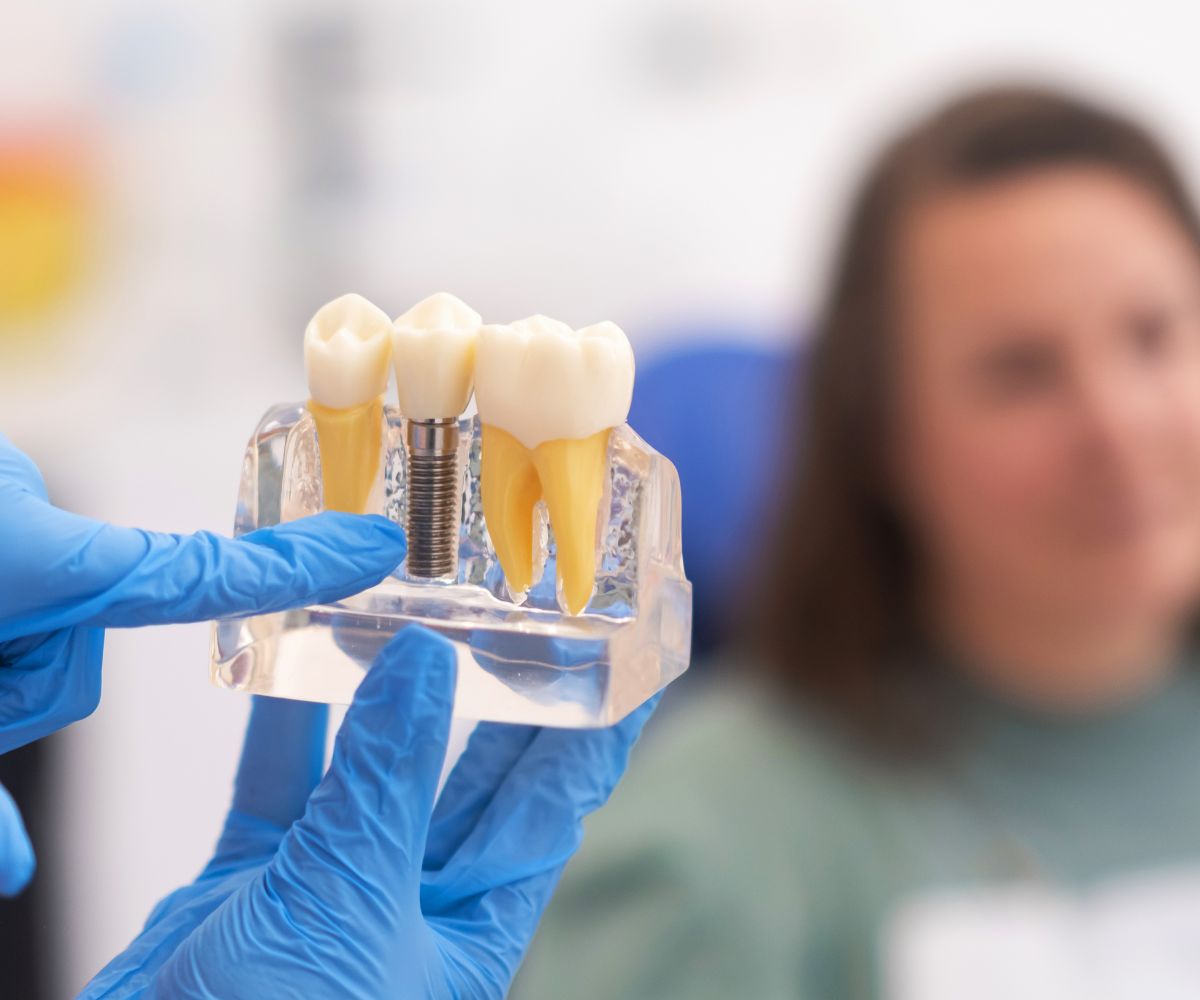Dental implants have become one of the most popular and effective solutions for replacing missing or damaged teeth. They offer a permanent, durable, and natural-looking alternative to traditional dentures and bridges. If you’re considering dental implants or are simply curious about how they work, this comprehensive guide will explain everything you need to know about the procedure, benefits, risks, and aftercare.
What Are Dental Implants?
A dental implant is a titanium post that is surgically placed into the jawbone to replace a missing tooth root. Once the implant integrates with the bone, a crown, bridge, or denture is attached to restore the appearance and function of the missing tooth. Implants are designed to act like natural teeth, providing a strong, stable foundation for dental restorations.
Unlike traditional dentures or bridges, which rest on the gums or adjacent teeth, dental implants are anchored securely into the jawbone, offering better comfort and functionality. This makes dental implants an ideal solution for people who want a long-term solution that feels and works like natural teeth.
The Dental Implant Process
The dental implant procedure is typically performed in several stages, which may take several months to complete. The process involves the following steps:
1. Consultation and Planning
The first step in getting dental implants is a consultation with your dentist or oral surgeon. During this visit, they will assess your oral health, including the condition of your gums, teeth, and jawbone. X-rays or 3D imaging may be taken to evaluate the bone density and structure of your jaw.
If you have lost a significant amount of bone in the jaw, you may need a bone graft procedure to ensure there is enough bone to support the implant. Your dentist will discuss your medical history, expectations, and treatment options, providing you with a personalized plan for your implants.
2. Surgical Placement of the Implant
The next step is the surgical placement of the dental implant. The procedure is typically performed under local anesthesia to ensure you are comfortable and pain-free during the surgery. In some cases, sedation may be used if you are anxious or prefer to be more relaxed.
The dentist will make a small incision in the gum tissue to expose the jawbone, and a hole will be drilled into the bone where the titanium implant will be placed. The implant is then inserted into the bone and the gum tissue is sutured back in place.
3. Osseointegration (Healing Process)
After the implant is placed, it needs to fuse with the jawbone in a process known as osseointegration. This can take anywhere from 3 to 6 months, depending on the individual’s healing process and bone quality. During this time, the titanium post integrates with the bone, creating a strong and stable foundation for the dental restoration.
It’s essential to follow your dentist’s post-surgical instructions carefully during this phase to avoid complications. You may be advised to avoid chewing on the implant site during the healing period.
4. Abutment Placement
Once the implant has fused with the bone, a small connector post called an abutment is placed on top of the implant. The abutment is used to hold the dental crown, bridge, or denture in place. This procedure is usually done under local anesthesia and may require a small incision in the gum tissue to expose the implant.
5. Placement of the Final Restoration
After the abutment is placed, impressions are taken of your mouth to create a custom crown, bridge, or denture that will fit perfectly and match your natural teeth. The final restoration is then attached to the abutment, completing the implant process.
In some cases, a temporary restoration may be placed while the final restoration is being fabricated. Once the permanent crown or bridge is ready, it will be securely attached to the implant.
Benefits of Dental Implants
Dental implants offer numerous advantages over other tooth replacement options such as dentures or bridges. Some of the key benefits include:
1. Durability and Longevity
One of the main benefits of dental implants is their long-lasting nature. With proper care and maintenance, dental implants can last for 20 years or more, making them a worthwhile investment in your oral health. Unlike dentures or bridges, which may need to be replaced every 5 to 10 years, dental implants provide a permanent solution.
2. Improved Functionality
Dental implants closely mimic the function of natural teeth. They provide a strong foundation for chewing and speaking, so you can eat your favorite foods without worry. Implants also help preserve the bone in your jaw, preventing bone loss that can occur when teeth are missing.
3. Natural Look and Feel
Dental implants are designed to look and feel like your natural teeth. The custom-made crown or bridge is carefully crafted to match the color, shape, and size of your surrounding teeth, ensuring that the restoration blends seamlessly into your smile.
4. Improved Oral Health
Since dental implants do not rely on neighboring teeth for support, unlike bridges, they help maintain the integrity of your remaining natural teeth. They also help prevent the shifting of teeth and gum recession that can occur with dentures. Additionally, implants help preserve the bone structure in your jaw by stimulating the bone, just like natural tooth roots do.
5. No More Slipping or Irritation
Traditional dentures can sometimes slip, causing discomfort and embarrassment. With dental implants, you don’t have to worry about your teeth moving around or causing sores on your gums. Implants are fixed securely in place, offering a stable and comfortable solution.
Potential Risks and Considerations
While dental implants have a high success rate, there are a few potential risks and considerations to keep in mind:
1. Infection
As with any surgical procedure, there is a risk of infection following the implant surgery. However, this can usually be avoided with proper oral hygiene and by following your dentist’s aftercare instructions.
2. Bone Loss or Implant Failure
In rare cases, the implant may fail to fuse properly with the jawbone, leading to the need for a second surgery or the removal of the implant. Factors such as poor bone quality, smoking, and certain health conditions may increase the risk of implant failure.
3. Cost
Dental implants can be more expensive than traditional bridges or dentures. However, their long-term durability and benefits may make them a more cost-effective option over time. Many dental practices offer financing plans to make implants more affordable.
Aftercare for Dental Implants
Taking care of your dental implants is essential to ensure their long-term success. Here are some important aftercare tips:
- Brush and Floss Regularly: Treat your dental implants like natural teeth by brushing twice a day and flossing once a day. Use a soft-bristled toothbrush and non-abrasive toothpaste to avoid damaging the implants.
- Regular Dental Check-Ups: Schedule regular check-ups with your dentist to monitor the health of your implants and surrounding tissues.
- Avoid Hard Foods: While dental implants are durable, it’s best to avoid chewing on hard objects like ice or hard candies that could damage the restoration.
- Quit Smoking: Smoking can negatively impact the healing process and increase the risk of implant failure. Quitting smoking will improve the chances of successful integration and the overall health of your implants.


